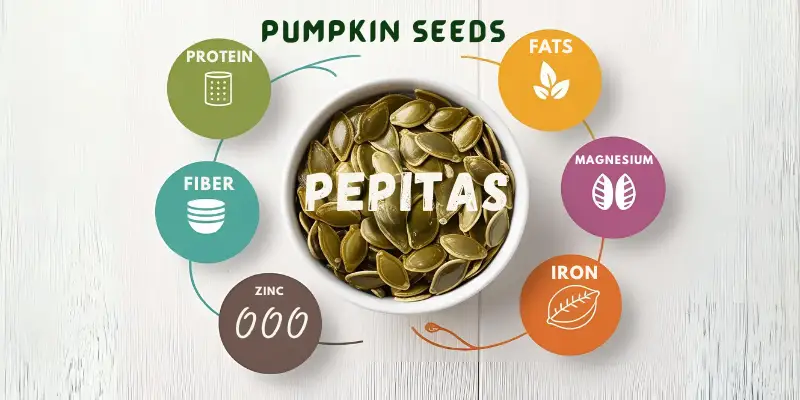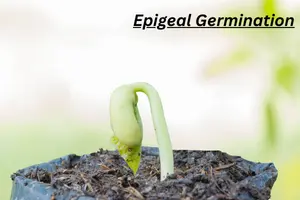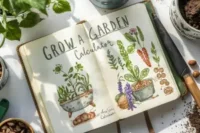What Are Pumpkin Seeds and Why Everyone’s Talking About Them
Published: 14 Oct 2025
Hello, healthy seed eaters!
Do you know those small green seeds found inside a pumpkin? Known as pumpkin seeds, these tiny snacks are rich in nutrients such as protein, magnesium, and zinc (USDA). Small but mighty, they’ve been enjoyed around the world for centuries, for both health and flavor.
Pumpkin seeds remind us that nourishment often comes from the parts we once threw away. Sheila, Seed Educator & Botanical Writer
I’m Sheila! I’ve spent the last seven years exploring the world of plants and gardening. In this article, I’ll share what pumpkin seeds are, why they’re good for your health, and how you can use them in simple, everyday ways.
By the end, you’ll see just how useful and powerful pumpkin seeds can be, whether you’re cooking, snacking, or gardening. Let’s get started!
What Are Pumpkin Seeds?
Pumpkin seeds are like tiny treasures hidden inside a pumpkin, easy to miss but full of value. These small, flat seeds are a rich source of nutrients and have been enjoyed across cultures for centuries as food, natural medicine, and seasonal symbols.
Let’s explore their origins, uses, and special qualities in more detail.
Definition
Pumpkin seeds, also called pepitas, are edible seeds found inside pumpkins, especially the varieties grown for eating. When removed from the fruit, cleaned, and dried, they make a crunchy snack that’s both healthy and versatile.
Personal Experience: I remember the first time I roasted seeds from my backyard pumpkin. What started as garden waste turned into a family favorite topping for salads and soups!
Botanical Classification
| Taxon | Pumpkin seeds |
| Kingdom | Plantae |
| Phylum | Magnoliophyta |
| Class | Magnoliopsida |
| Order | Cucurbitales (dicot) |
| Family | Cucurbitaceae |
| Genus | Cucurbita |
| Species | Cucurbita pepo |
| Common name | Pumpkin |
| Seed name | Pepitas or Pumpkin seeds |
Origin & Cultural Relevance
- Pumpkin seeds have a long history, dating back over 7,000 years in Central America, where Indigenous people prized them for their healing and nourishing qualities.
- Today, cultures around the world, from Mexico to India, use pumpkin seeds in cooking, traditional medicine, and even rituals. They’re like nature’s original multivitamin, passed down through generations.
Inside every pumpkin seed is the promise of a future harvest, a reminder that even the smallest things hold great potential.Robin Wall Kimmerer, Botanist & Author
Where Pumpkin Seeds Come From
- Pumpkin seeds come from the Cucurbita pepo species, which includes many common pumpkins and squashes. These plants grow on trailing vines and are pollinated by bees.
- I’ve always noticed how deep and wild the vines can be in my garden, almost like the plant is stretching out to share its bounty of seeds.
- Pumpkins thrive in warm, sunny weather and well-drained soil, making them ideal for home gardens in many parts of the world. If you’ve ever grown a pumpkin, you’ve likely walked past hundreds of potential snacks without realizing it!
Nutritional Value of Pumpkin Seeds
Have you ever heard the saying, “Good things come in small packages”? Pumpkin seeds are the perfect example. These tiny green goodies may look simple, but they’re a powerhouse of essential nutrients that support energy, immunity, and overall health.

Let’s break down their macronutrients, highlight their key vitamins and minerals, and see what a small handful (28g) offers.
Macronutrients (Protein, Fats, Fiber)
- Pumpkin seeds offer a well-balanced trio of plant-based protein, healthy fats, and fiber, ideal for anyone looking to eat smart.
- A 28-gram portion (approximately two tablespoons) has nearly 7 grams of protein, making it an ideal snack for after-garden tasks or pre-workout nourishment.
- They’re also rich in heart-healthy fats, mostly polyunsaturated and monounsaturated, and around 1.7 grams of fiber, which helps keep your digestion humming.
Personal insight: When I first swapped out potato chips for roasted pumpkin seeds during my work breaks, I noticed a real difference in how full and energized I felt!
Pumpkin seeds are tiny treasures, nature’s way of giving us protein, power, and plants all in one bite.Michael Pollan, Food Author
Key Vitamins and Minerals (Magnesium, Zinc, Iron, etc.)
These seeds are like nature’s multivitamin.
- They’re particularly high in magnesium, which supports muscle function and sleep quality, making them perfect for active lifestyles and stressed-out parents alike.
- You’ll also get a good dose of zinc (great for immunity and skin health).
- Iron carries oxygen in your blood
- Phosphorus is essential for bones and teeth
- They squeeze in some potassium, selenium, and vitamin E, a little crunchy army of goodness!
Verified Nutritional Chart for Pumpkin Seeds (Per 28g Serving)
| Nutrient | Amount (per 28g) |
| Calories | ~151grams |
| Protein | ~7grams |
| Total fat | ~13grams |
| Carbohydrates | ~5grams |
| Dietary fibers | ~1.7grams |
| Magnisium | ~156mg (37% of the DV) |
| Zinc | ~2.17mg (20% of the DV) |
| Iron | ~2.29mg(13% of the DV) |
| Phosphorus | ~332mg(27% of the DV) |
| Potassium | ~228mg |
DV = Daily Value. These values are approximate and can vary based on the source and preparation method.
Health Benefits of Pumpkin Seeds
Pumpkin seeds aren’t just crunchy snacks—they’re nature’s little health boosters! Packed with nutrients, they support everything from your heart to your sleep.
Let’s explore how these tiny treasures can benefit your body.
1: Antioxidant Support
- This product contains antioxidants like vitamin E, carotenoids, and phenolic acids.
- Aids fight oxidative stress and protect your cells from damage.
- It may reduce inflammation linked to chronic diseases.
Personal tip: I often sprinkle pumpkin seeds on my smoothie bowls for an antioxidant kick.
2: Heart and Blood Pressure Health
- It is high in magnesium, which aids in regulating blood pressure.
- It contains omega-6 fatty acids and phytosterols that may lower LDL (bad cholesterol).
- Rich in potassium, aiding overall heart rhythm.
- Pumpkin seed oil may reduce arterial stiffness in postmenopausal women.
3: Prostate & Bladder Support
- Historically used to support prostate function and urinary health.
- It may lower the symptoms of benign prostatic hyperplasia (BPH).
- Rich in zinc, it is essential for male reproductive health.
- It assists in improving bladder control and reducing nighttime urination.
4: Blood Sugar Control
- High in fiber and protein, helping regulate blood sugar levels.
- It may reduce post-meal blood sugar spikes (which is significant for people with diabetes!).
- Animal studies show that pumpkin seed extract improves insulin regulation.
- Easily paired with other foods for a balanced glycemic meal.
5: Better Sleep (Tryptophan)
- It’s a natural source of tryptophan, an amino acid that boosts melatonin.
- It helps improve sleep quality and duration.
- Magnesium also helps to calm the nervous system.
- Combine with carbs (such as bananas or toast) for improved tryptophan absorption.
Precautions and Drawbacks of Pumpkin Seeds
Pumpkin seeds may be tiny, but like anything nutritious, moderation is key. While they’re packed with benefits, there are a few things to remember before munching away. Let’s look at some standard precautions to enjoy them smartly and safely.
|
How to Use Pumpkin Seeds in Daily Life
Pumpkin seeds are incredibly versatile, making them an easy and nutritious addition to your daily routine. Whether you’re looking to boost your diet with a healthy snack or incorporate them into your gardening practices, these little seeds pack a punch.
Let’s find out some simple and creative ways to use them in the kitchen and the garden.
In the Kitchen
Pumpkin seeds are incredibly versatile and can enhance your meals in various ways. Here are some ideas:
- Snacking: Enjoy raw, roasted, or spiced for a healthy snack.
- Salads: Sprinkle over salads for added crunch and nutrition.
- Baking: Incorporate into muffins, bread, or cookies for a nutritious boost.
- Smoothies: Blend into smoothies to boost protein and fiber.
- Soup Toppings: Use as a garnish for soups to add texture and flavor.
In the Garden (for Seed Savers)
Growing your pumpkins and saving the seeds can be a rewarding experience. Here’s how you can do it:
- Collecting Seeds: After harvesting your pumpkins, scoop out the seeds and rinse them to remove any pulp.
- Drying Seeds: Spread the seeds on a paper towel and let them dry in a cool, dry place for a few days.
- Storing Seeds: Once dry, store the seeds in a paper envelope or a glass jar in a cool, dark place until you’re ready to plant them next season.
How to Store Pumpkin Seeds
Storing pumpkin seeds the right way keeps them fresh and tasty.
Think of it like packing away your winter clothes; you want them clean and ready, not musty and worn.
Whether you grow your own or buy them, good storage keeps the seeds crisp, flavorful, and long-lasting.
Storage Tips
To keep your pumpkin seeds fresh and crunchy:
- Use an airtight container: This prevents moisture and air exposure, which can cause seeds to go rancid.
- Store in a cool, dry place, such as a pantry or cupboard. If you live in a humid climate, consider refrigeration.
- Add a food-safe desiccant pack: I often use desiccant when saving seeds from my garden, which is especially helpful during monsoon season.
- Label and date your container: This simple habit helps you track freshness, such as when canning or preserving foods.
Shelf Life
- A properly preserved raw pumpkin seed can survive 3–6 months at room temperature and 1 year or more in the fridge or freezer.
- Roasted seeds stay 2–3 months in a cool, dry environment.
Signs of Spoilage
Just like nuts, pumpkin seeds can go bad if not stored properly. Watch for:
- Off smells (a sour or oily scent)
- Soft or rubbery texture
- Visible mold or moisture inside the container
If you’re unsure, trust your senses; it’s better to toss than risk it.
| Trivia Facts |
|---|
|
Final Verdict
Learning what pumpkin seeds are took on a whole new meaning for me when I grew my first pumpkin patch. I used to toss the seeds; now I save, roast, and even replant them. They’ve become a staple in both my garden and my kitchen.
If I could give one tip from my journey, it would be helpful not to underestimate these little seeds; they’re easy to use, fun to grow, and incredibly nourishing.
Give them a try in your own home! If you find this helpful, share it with a fellow gardener or food-lover. Let’s grow the seed of wisdom together.
Frequently Asked Questions About Pumpkin Seeds
Curious minds often sprout more questions, especially regarding something as small yet mighty as pumpkin seeds! Below are the most common questions readers ask, answered and clearly explained to help deepen your seed wisdom.
Not quite. Pepitas are the green, shell-less seeds found in specific pumpkin varieties. Regular pumpkin seeds have a white outer shell and need to be shelled. Both are nutritious and edible!
Yes, you can eat them raw after rinsing and drying. They’re perfectly safe and full of nutrients. Roasting adds extra crunch and flavor.
Pumpkin seeds are great for healthy snacking. They contain protein, fiber, and good fats, which help you feel full longer. Just watch the portions, they’re calorie-rich.
Wash and dry your seeds, toss them with oil and seasoning, and bake at 300°F (150°C) for 20–25 minutes, stirring once halfway through. Let them cool before eating.
Yes, if they’re raw, not roasted, and from heirloom pumpkins. Dry and store them properly before planting. I’ve grown beautiful pumpkin vines from seeds I saved myself!
Yes, especially if exposed to heat, air, or moisture. Store them in a cool, dry, airtight container to keep them fresh for up to a year. Rancid seeds smell off or taste bitter.
They’re safe in small amounts and packed with nutrients. For younger kids, offer roasted or ground seeds to avoid choking. Always supervise snack time!
Pumpkin seeds contain magnesium, zinc, iron, protein, and heart-healthy fats. Just a handful can give your body a nutritious lift. They’re like little multivitamin nuggets!
Yes! They contain tryptophan, which helps your body produce melatonin, the sleep hormone. A small handful before bed may gently support sleep.
A healthy serving is 1 to 2 tablespoons (about 15–30 grams). It provides key nutrients without overloading calories. You can snack on it or mix it into meals.
| Reference Sources |
|---|
|

- Be Respectful
- Stay Relevant
- Stay Positive
- True Feedback
- Encourage Discussion
- Avoid Spamming
- No Fake News
- Don't Copy-Paste
- No Personal Attacks

- Be Respectful
- Stay Relevant
- Stay Positive
- True Feedback
- Encourage Discussion
- Avoid Spamming
- No Fake News
- Don't Copy-Paste
- No Personal Attacks





